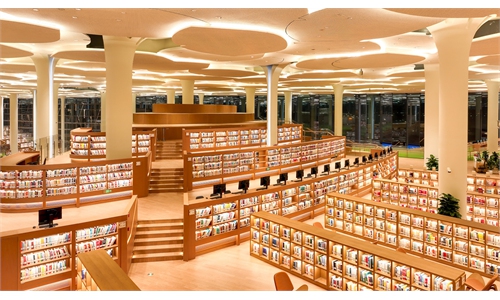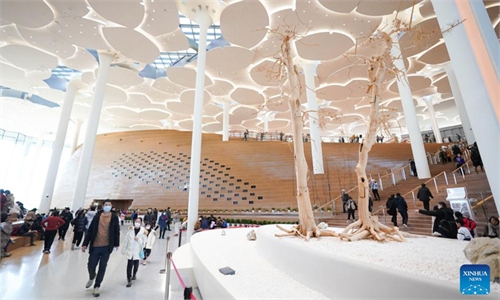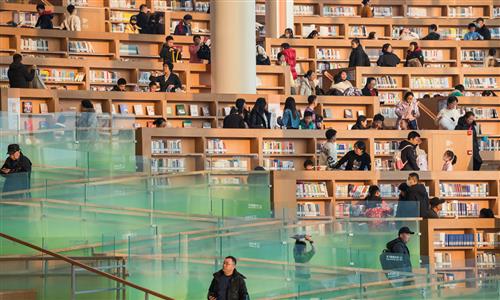ARTS / CULTURE & LEISURE
China's first carbon neutral library embraced in NW village, generating new community dialogue
Green landmark
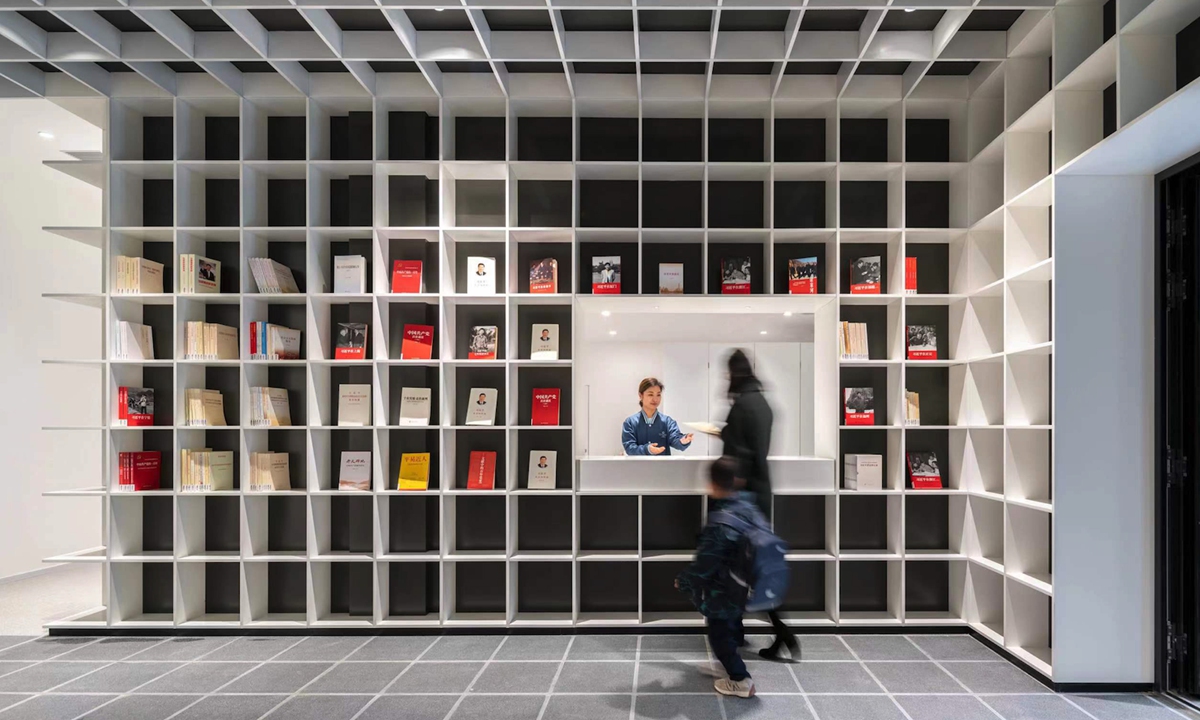
Readers visit the Yangzheng Library in Tianshui, Gansu Province. Photo: Courtesy of SAKO Architects
Japanese architect Keiichiro Sako and his design team of SAKO Architects have created around 160 projects mainly in China over the last 20 years. Located in Tianshui, Northwest China's Gansu Province, the recently finished Yangzheng Library defines one of Sako's exceptional designs since it marks the country's first carbon neutral reading facility based in a rural village.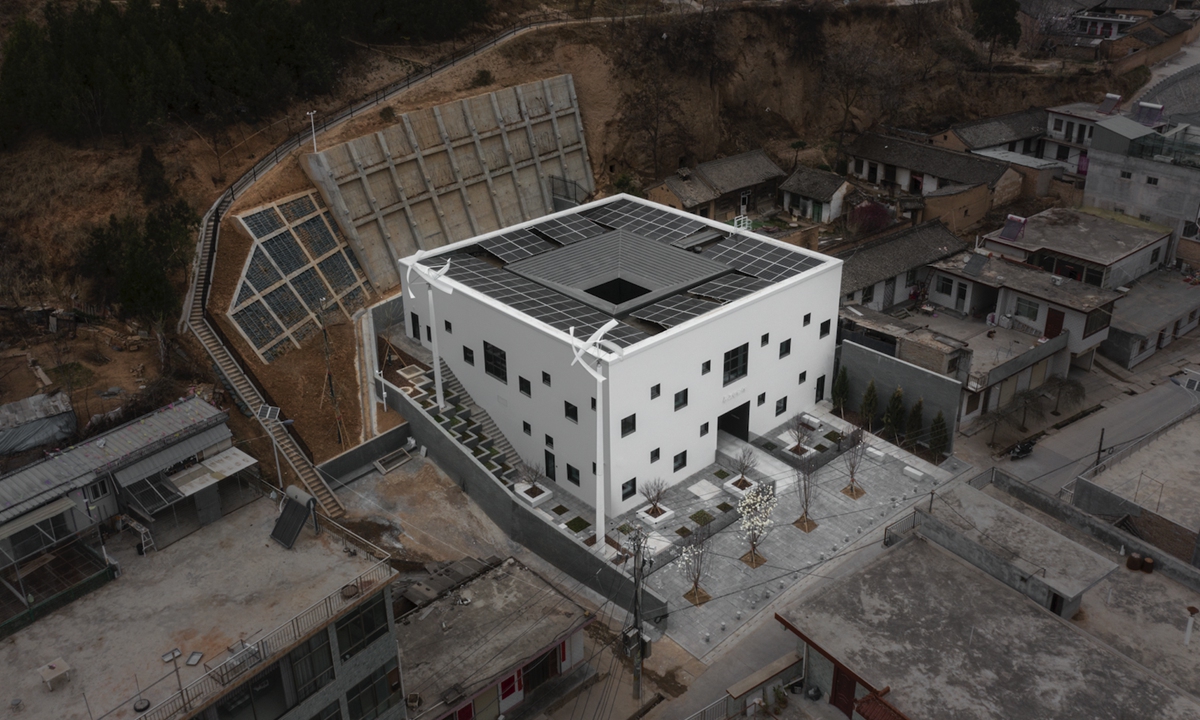
The Yangzheng Library in Tianshui, Northwest China's Gansu Province Photo: Courtesy of SAKO Architects
Painted white and with square windows decorating its façade, the Yangzheng Library boasts nearly 800 square meters and is located in Panjizhai village in the town of Mapaoquan.
The library's original site was a century-old private residence. Yet the modern makeover aims to turn it into a community hub catering to multiple scenarios such as family gatherings and educational activities. The library carries a mission to enhance the bonds between villagers.
Unlike many rural public spaces that maintain the local's folk aesthetics, the Yangzheng Library is a vanguard piece of architecture that not only shows from its modest minimalist look, but also its technology-oriented designs to promote environmental sustainability.
The roof of the two-story building was installed with 80 sets of 600-watt photovoltaic modules that maximize the use of local solar resources. Graphite polystyrene boards were used as wall insulation material wrapping the architecture's exterior. Ju Liang, an architect of SAKO Architects, told the Global Times that the design was like "putting the whole building in a thick coat."
One would mostly realize the library's "spirit" when experiencing natural sunlight or rains splashing in the open-air atrium space on the building's second floor. The design, along with grass covered stairways, allows readers to temporarily detach from daily chores and be aware of a quite intellectual moment gifted by poetic nature.
Yu Lintao, the library's guide, told the Global Times that through means such as passive architectural designs and renewable energy, the building's energy-saving rate reaches 166 percent to have achieved energy self-sufficiency. Sako's "green" blueprint was largely facilitated through the help of a technical team at the China Academy of Building Research.
Aside from reading facilities that involve a collection of more than 23,000 books, the Yangzheng Library shows a human touch through offering a dinning space providing free meals every day to villagers above 80 years of age.
The white Yangzheng Library stands like a maverick among surrounding houses that were built upon Gansu's unique yellow-brownish wind-blown soil. Yet, Sako told the Global Times that the misfit spirit is part of his design philosophy to the project.
"I hope that the new library and its represented sustainable spirit can inspire the locals to perfect their living environments," the Japanese architect said.
In 2021, a law on promoting rural vitalization was adopted by China's national legislature. Following such national guidance, rural cultural facilities like the Yangzheng Library started to mushroom across the country.
In Pengzhou, Sichuan Province, a rural library has attracted around 100 visitors per day since it was opened in 2021. The library that incorporates local pear trees into its design is not only for reading, but also a space that exhibits the area's intangible folk arts and its "pear picking" tradition gifted by nature.
Sako told the Global Times that most authentic cultural traditions often dwell in the remotest villages and the vast demographic of Chinese rural areas made its rural cultures even more distinctive and diversified.
"The rural vitalization is a great idea, and I think an architectural project should be able to continue a rural area's unique tradition, serving the locals with more public sense through the whole revitalizing process," said Sako.
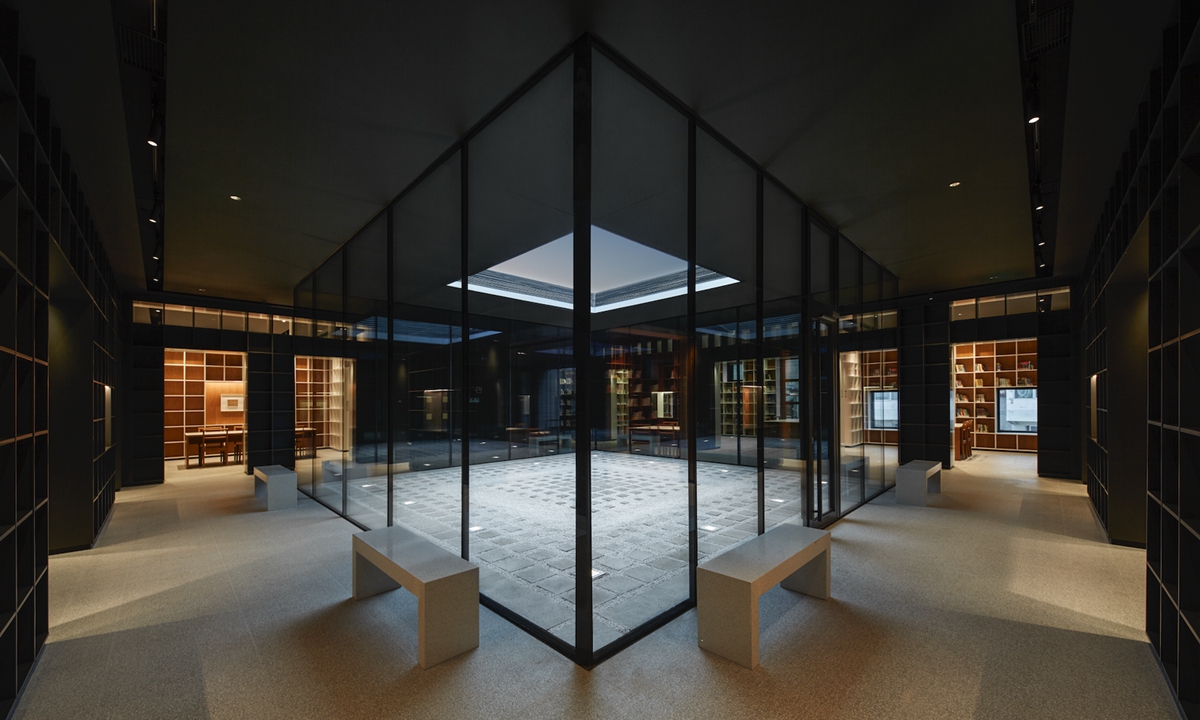
The Yangzheng Library in Tianshui, Northwest China's Gansu Province Photo: Courtesy of SAKO Architects
'Second hometown'
Sako was once an architect working with 2024 Pritzker Architecture Prize winner Riken Yamamoto. In 2004, he became the first Japanese architect to open a studio in Beijing.
He told the Global Times that he was startled by China's huge landscape when he arrived in the country for the first time. He believes that such a big landscape has brought the country more urban diversities.
Over the last 20 years, Sako has traveled to many Chinese cities including smaller ones like Yichun in Jiangxi Province. Those experiences have not only made him believe that "China is my second hometown," but have also brought him inspirations for new projects.
Other than the Gansu library, Sako is most known for his "Mosaic" project in Beijing. The architect and his team transformed an unattended half-finished building into a new complex facility that looks vivacious.
Many of the architect's projects have been given cute names on his website such as the "Zigzag" to mark an elementary school project in Tianjin and the "Cocoon," an office project in Shanghai.
Although many of Sako's works were stylish, incorporating small-scale vibrant colors that differentiate themselves from monotonous buildings, the architect said that he never looks to use one formulation to represent his style.
"Every project has its own theme and style; I wish people see me as a versatile creator who can cope with infinite changes," Sako told the Global Times.
